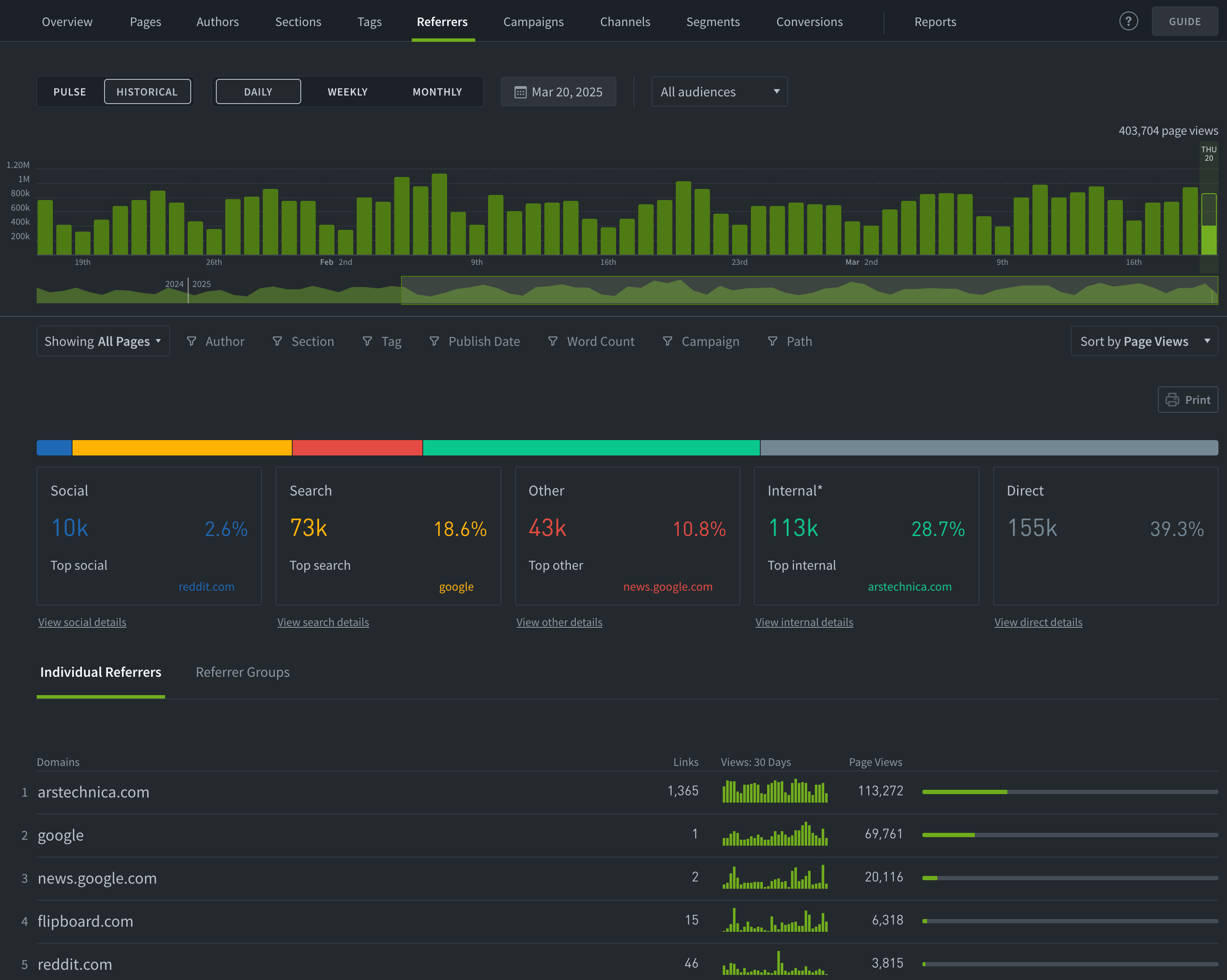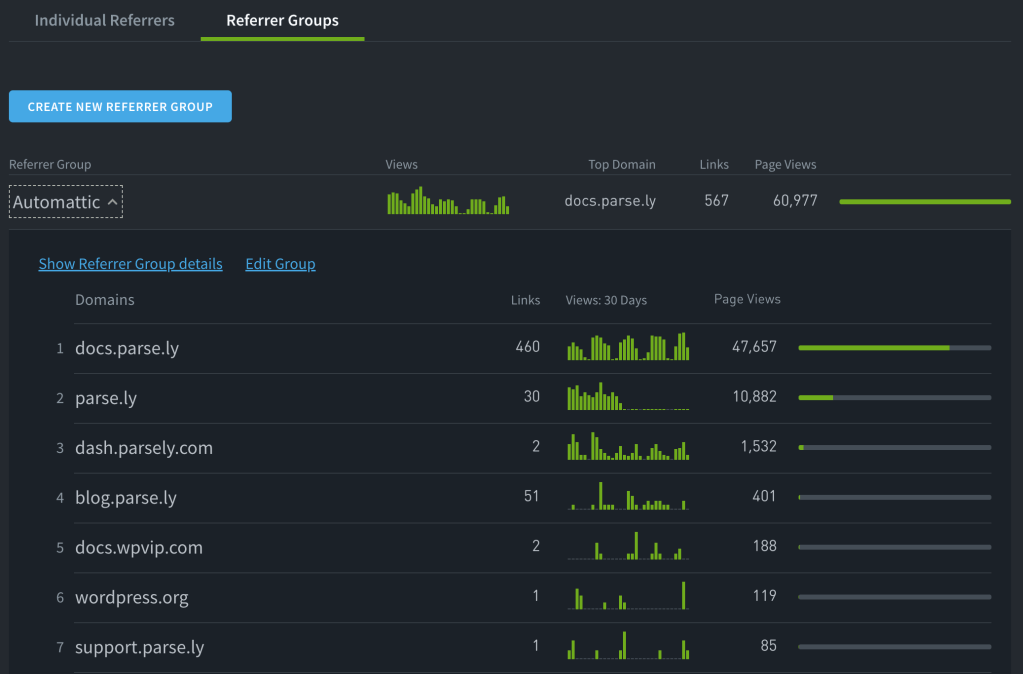Referrers
The Referrers page shows how people are finding your content. You can find this page by selecting it from the nav bar. Referrers are broken into five primary categories: Social, Search, Other, Internal*, and Direct.
- Use one or more filters to refine your data.
- Click on a channel to see a list of sites and apps sending traffic your way.
- Explore traffic patterns to curate better content for target audiences

Referrer Categories
Clicking on the tile of a referrer category (Social, Search, Other, Internal*, Direct) will filter the list of Individual Referrers. Parse.ly categories many domains as defined below. Our categorizations affect all of our customers, so categorical customizations are not feasible. However, if you believe we’ve miscategorized a domain, you may submit a feature request to support@parsely.com for consideration.
1. Social
Parse.ly tracks a number of referring domains as social networks. That list currently includes:
- facebook.com
- fantail.social
- gigya.com
- have2have.it
- instagram.com
- like2buy.curalate.com
- linkedin.com
- linkin.bio
- linkinprofile.com
- linkshop.me
- linktr.ee
- lnk.bio
- meneame.net
- pinterest.com
- po.st
- qq.com
- reddit.com
- shor.by
- stumbleupon.com
- t.cn
- twitter.com
- weibo.cn
- weixin110.qq.com
- xing.com
2. Search
Search traffic comes from search engines such as Google, Yahoo!, and Bing.
3. Other
Any additional external referral source will be classified here, such as:
- News Aggregators (e.g. Google News, Flipboard, Newsbreak)
- RSS feeds
- External Sites
- Applications
- And more
4. Internal*
The Internal category includes any traffic from your site’s domain. This can be from the homepage, in-article links, or marketing automation emails (if properly set up with a matching subdomain).
Large numbers of internal traffic on an article can be driven by photo galleries or paginated content where clicking to see the next image in a slideshow registers another page view (dynamic tracking), but it can also be a good indication of loyalty throughout a site.
*Note
Self-referring page views (where url ref == url) are not included in the Internal page view count. So, if you were to add up the number of page views in Social + Search + Other + Internal + Direct it would not equal the total page views displayed in the timeline. To get an exact match, add the number of self-referring page views found by hovering your cursor over the Internal referrers tile.
5. Direct
Direct traffic simply has no referrer data. This could happen for a number of reasons:
- The user typed the URL into their browser
- Clicking on a browser bookmark
- Links shared via Email, SMS, or an app, e.g., TikTok, Truth Social, Mastodon, Discord, etc.
- Privacy-centric search engines may strip out referrer info
You may be able to identify the sources of some direct traffic by adding parameters to your URLs and tracking them on the Campaigns page.
View Details

Clicking on a details link like “View social details” will navigate to a listings page featuring content that is popular within the category that you selected. In this case, you would see which of your posts have the most referrers from social media.

Domains
While viewing Referrer details, you can view the domains that contributed the most page views (or conversions).

Links
Associated with each domain is a “Links” metric. This refers to the number of unique URLs from the specified domain that lead to page views on your site. You may click on a URL to see some of those URLs. Many websites will strip out referrer information making it impossible for us to tell you exactly where some traffic originated. This behavior varies from site to site.

Show domain details
By clicking on “Show domain details”, you may see additional information about a specific domain that’s generated views or conversions on your site.

Referring URLs
Clicking “Referring URLs” will provide a list of all URLs, on the chosen domain, that were referrers to your site.

Referrer Groups
If you want to organize the Referrers into your own groupings, then check out Referrer Groups.

Last updated: March 21, 2025